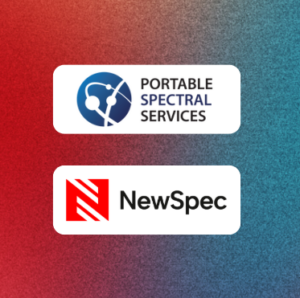
A Bright Future Ahead
Portable Spectral Services Announces Exciting Management Transition
Visible Near Infrared (VNIR) and Short Wave Infrared Spectroscopy (SWIR) is a useful tool for mineral identification. Using a Near Infrared (NIR) spectral analyser allows for rapid collection of VNIR-SWIR spectra. This makes it a cost-effective method for determining sample mineralogy and mineral characteristics. Spectral data combined with geochemical information from laboratory data or in conjunction with portable XRF data has shown the technique to be successful at improving the classification of what is visually difficult-to-log lithology. Furthermore, the subjectivity of individual geologists can be removed for drill logging classification. In additional further advanced spectral interpretations provide outcomes that can be used to develop alteration maps and combined geochem-spectral vectors towards mineralisation.
VNIR-SWIR can provide a more comprehensive classification of rock lithology, by identifying minerals that are visually difficult to distinguish. At times it can be visually challenging to differentiate between andesite, basalt and ultramafic as well as their altered counterparts. The ability of VNIR-SWIR to identify minerals including chlorites, amphiboles, clays and micas can enable accurate lithology identification and differentiation. VNIR-SWIR can also identify minerals that are missed during logging, e.g., in a fine-grained clay (Fig. 1) the VNIR-SWIR analysis was able to identify the presence of diaspore, dickite, alunite and topaz.

Figure 1. Fine-grained clay sample.
Additionally, the application of VNIR-SWIR to an exploration or mining project can produce more detailed and accurate geological maps. Figure 2 demonstrates how VNIR-SWIR mineralogy has supplemented a geologist’s log to create a more accurate representation of the ore body

Figure 2. Modification of geologist logs based on supplementary SWIR mineral identification
In addition to mineral identification, VNIR-SWIR can provide significant information about the crystallinity and chemical composition of the minerals. These mineralogical features when combined with XRF geochemical analysis can enable the identification of alteration zones and produce key geochem-spectral vectors towards mineralisation. For example, the sample in figure 3 was logged as fresh core but SWIR analysis revealed illite alteration.

Figure 3. Logged as fresh rock, yet SWIR analysis revealed illite alteration.
The result of a combined pNIR & pXRF study is the production of a highly detailed and informative dataset that can be used to accurately identify lithologies to map ore bodies, determine alteration zones and create mineralisation vectors. These methods can be applied to a wide range of deposit types including porphyry-epithermal, intrusion-related, mesothermal, VHMS, sediment-hosted Au, orogenic Au, lithium pegmatite, laterite and regolith.
Portable Spectral Services hire both ASD Terraspec 4 Hi Res and Spectral Evolution OreXpress NIR spectrometers. Both spectrometers are specific to the mineral industry in providing full spectral range (350-2500 nanometers).
We also offer interpretations services for processing of spectral data as well as consulting services for advanced studies on alteration and mineralisation footprint and possible vectors towards mineralisation. If you would like to learn more about our services, please get in touch with our helpful team.

Portable Spectral Services Announces Exciting Management Transition
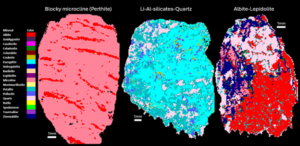
Our tool introduces uXRF (micro-X-ray fluorescence) scanning technology to RC chip analysis, enabling rapid, non-destructive, and quantitative analysis of major, minor, and trace mineral phases.
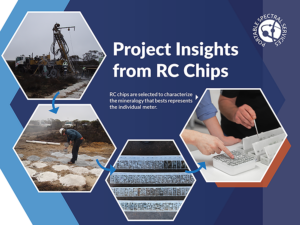
Automated micro-X-ray fluorescence (micro XRF) technology emerges as a powerful tool to rapidly and accurately capture the mineralogy of rock chip, RC and AC samples.

Findings of an ongoing regional evaluation study over concealed Proterozoic lithologies known to host magmatic nickel sulphides with potential to host other base-metal, gold and rare earth elements (“REE”) systems within the Fraser Range, Western Australia.
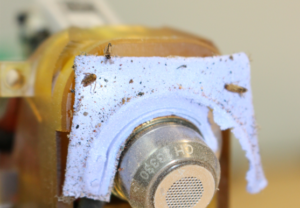
Findings of an ongoing regional evaluation study over concealed Proterozoic lithologies known to host magmatic nickel sulphides with potential to host other base-metal, gold and rare earth elements (“REE”) systems within the Fraser Range, Western Australia.
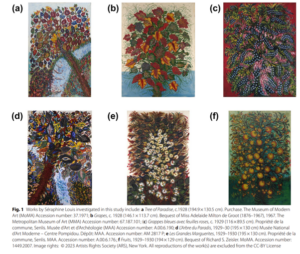
Findings of an ongoing regional evaluation study over concealed Proterozoic lithologies known to host magmatic nickel sulphides with potential to host other base-metal, gold and rare earth elements (“REE”) systems within the Fraser Range, Western Australia.